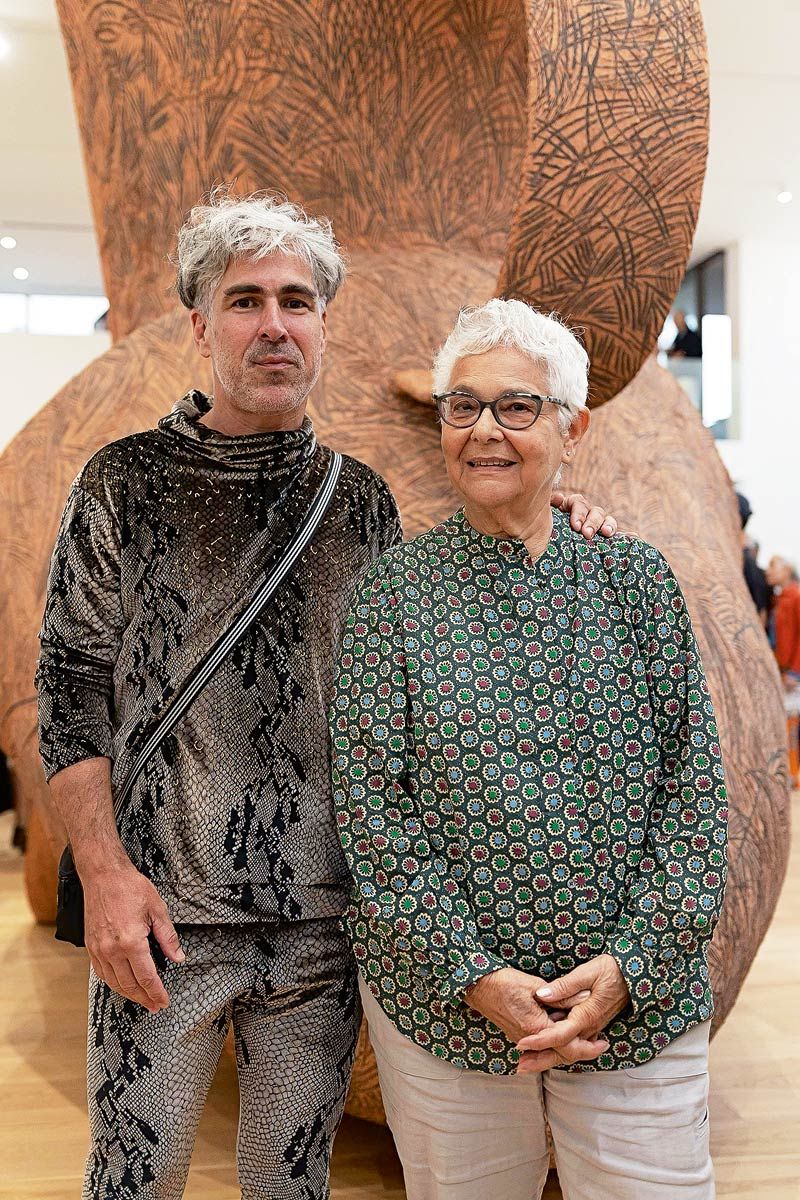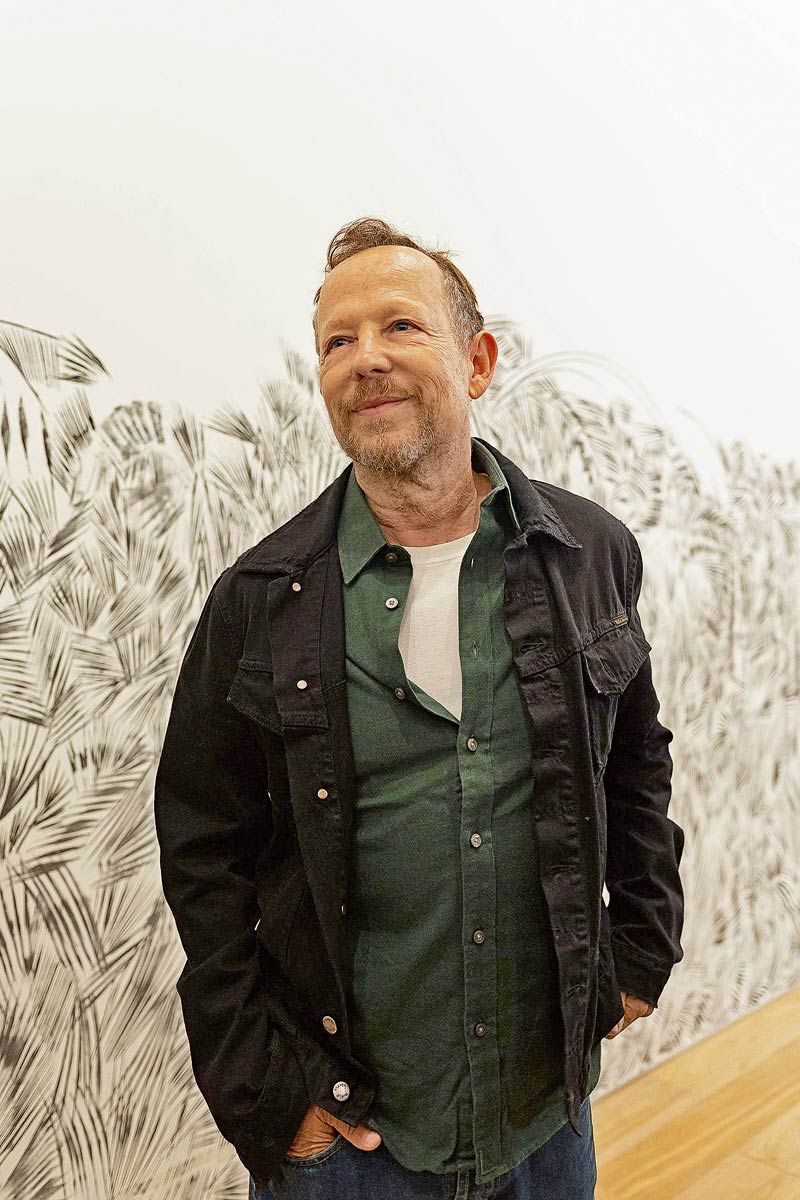
The exhibition that everyone wants to see at José Ignacio
Gabriel Chaile: the exhibition that everyone wants to see at José Ignacio
It is the first time that he exhibits in Punta del Este. What is the "site-specific" work that he created at the Cervieri Monsuárez Foundation facilities like?
Punta del Este has always been an attractive geography for artistic activity, where the free time of summer favored a deeper dialogue with spectators, in galleries, fairs and exhibition centers.
In the last decade, this dialogue has gained in formality and breadth. A movement that translates into increasingly important exhibitions of the region's outstanding artists and notable international visitors, and becomes a central activity for those who spend their holidays on the coast of Uruguay.
One of the Argentine artists with the greatest projection abroad, the Tucuman Gabriel Chaile, is the great protagonist of the 2025 season, in one of José Ignacio's new art spaces: the Cervieri Monsuárez Foundation. There, from January 6th, you can visit “The young people remembered their songs”, the “site-specific” project that Chaile and his team mounted in their facilities, curated by Pablo León de la Barra. An exhibition that around a central sculpture recreates a landscape, its inhabitants and the stories that their memory does not want to stop telling us.
The forms
Created in clay, Gabriel Chaile's immense sculptures reformulate the ceramic pieces of the native peoples, in the cultural and geographical area of the place where the artist was born: Tucumán. On a superhuman scale, each piece imposes itself as a link of historical knowledge that is transmitted from generation to generation and is an image of resistance against discrimination and mistreatment imposed on the populations that inhabit that territory, since times before colonization. “The clay, which is also the same color as his skin, brown, serves as a material that shows the fragility of these stories to survive the official narratives of whiteness, which constantly try to extinguish and make invisible the stories of others,” explains Pablo León de la Barra, curator of the exhibition. Along with him, Chaile also carried out an important exhibition-performance in the United States, at the Guggenheim Museum, called 'Travelling Cultural Center'. The young people who played the drums in New York on that occasion were also present at the opening of Punta del Este, to remember the songs that were forgotten and that must return again and again to memory.
The sculpture “La Yunga” occupies the center of the room. The term refers to the central mountain forests in the geography of Tucumán. “The jungle is wild - describes Chaile - it does not obey a human pattern, but rather its own, autonomous one. So many things happened there at different times. The different times that the earth holds and the jungle protects them in its own way. The jungle is never still, it moves and moves the earth. The movements bring things out from inside to outside and reveal to us testimonies of now, yesterday and other times. The revelation of a great or sinister action that springs forth to the present in the form of ceramics from primary cultures, of warlike objects in times of dictatorships.”
In “La Yunga”, the artist pays homage to the landscape of his province, and also to the tapir, an animal in danger of extinction. On the surface of the sculpture there are drawn stories, testimony of the armed confrontations of the army with the people in the 60s and 70s; battles that are a quote from the work “El fusilamiento” by the Tucumán painter Ezequiel Linares.
The walls of the room also have traces of the vegetation of that jungle that hides the wounds that the dictatorship left on its soil. “'La Yunga' is a warrior sculpture, angry, with fangs and a ferocious face, but it is also a sculpture that cries and contains pain, that has witnessed countless acts of violence against nature, animals and men themselves,” explains Pablo León de la Barra.

The location
The space where “Los Jóvenes Recuerdoron sus canciones” takes place deserves a special mention. Founded by lawyers Virginia Cervieri and Pablo Monsuárez, the “Fundación Cervieri Monsuárez” (Cervieri Monsuárez Foundation) set out, since its opening, just a year ago, to dedicate itself to the exhibition and dissemination of contemporary Latin American art and to integrate Uruguay into the international artistic circuit.
Its headquarters are located in the town of José Ignacio and it is one of the latest designs made by the Uruguayan architect Rafael Viñoly. Among the peculiarities of its construction, in addition to its perfect harmony with the natural environment, a wall made of stone according to the techniques of ancient Inca artisans stands out. To make it, 20 specialists traveled especially from Peru. The building has 900 m2 divided into three floors and windows that offer wonderful views of the sea.

The Andean reminiscences of Viñoly's design dialogue perfectly with the work of Gabriel Chaile. In their own way, both affirm the presence of local culture and the need to declare, in each creation, the trace of the history that contains them.
Source

- May 09, 2025
Gallery of cartoon by André François - France



- May 09, 2025
Pablo Placencia


- May 09, 2025
Kael Abello

- May 09, 2025
Gallery of painting by Rafal Olbinski- Poland


- May 09, 2025
Etten Carvallo

- May 08, 2025
Exhibition of South American indigenous…

- May 08, 2025
Venezuelan artist at Frieze New York

- May 07, 2025
Call for International Festival of New …

- May 07, 2025
150 Works by Picasso, Dalí, and Miró

- May 07, 2025
Art Books at the 2025 Book Fair

- May 06, 2025
Corrientes to Present the Seventh Editi…

- May 06, 2025
The first exhibition of a Latin America…

- May 05, 2025
Graffiti Queens Festival 2025

- May 05, 2025
Exhibition about Da Vinci opens technol…

- May 04, 2025
MON promotes painting workshop with art…

- May 04, 2025
ArteCo Launch in Buenos Aires Prepared

- May 03, 2025
Art market in Brazil

- May 03, 2025
The Latin American Exhibition in Qatar …

- May 02, 2025
20 Key Points About Cubism

- May 02, 2025
Goodbye, Master Patrice Ricord (1947–20…

- May 01, 2025
14th Mercosul Biennial with works of art

- May 01, 2025
Pinta Lima Art Fair Bids Farewell to 20…

- April 29, 2025
Alessandra Risi and the Silent Expansio…

- April 29, 2025
The BISFF Short Film Festival

- April 28, 2025
Launch 2025 Year of Culture at National…

- October 08, 2023
Illustrations reflect the brutal Israel…

- December 25, 2023
The jury statement of the Iran-Brazil F…

- July 29, 2023
History of Caricature in Brazil

- April 20, 2024
Poignant Image of Grief Wins Mohammed S…

- September 01, 2023
Neural Filters in new photoshop 2023

- October 21, 2023
Erick Meyenberg and Tania Ragasol at th…

- March 30, 2024
illustration websites in Latin America

- March 15, 2024
museum of sculpture of Salvador Dali

- August 09, 2023
Venezuela mural expresses solidarity wi…

- May 20, 2024
Latin American Festival of Performing A…

- March 14, 2024
museum of statue of van gogh

- September 08, 2023
BMW Painting Prize: art beyond cars

- July 30, 2024
The artist from San Luis Mirta Celi rep…

- June 29, 2024
Exhibition at Centro MariAntonia contra…

- April 25, 2024
Latin American art at the Venice Bienna…

- November 07, 2024
The exhibition “The message behind Bote…

- June 24, 2024
The urban art that lives in Lima

- January 12, 2025
The Ralli Museum in Punta del Este

- January 19, 2025
Gaza Biennial

- July 03, 2024
Newly discovered rock art in Venezuela

- February 18, 2024
7 Ways to Understand What Visual Arts A…

- October 08, 2023
Illustrations reflect the brutal Israel…

- December 25, 2023
The jury statement of the Iran-Brazil F…

- May 15, 2024
Eleven murals for Gaza painted across t…

- January 02, 2025
13 commemorations that will mark the cu…

- November 17, 2023
Fernando Botero's work is booming after…

- July 29, 2023
Piracicaba International Humor Exhibiti…

- November 06, 2023
Heba Zagout: Palestinian artist murdere…

- October 17, 2023
The influence of Latin American artists…

- February 03, 2024
THE HISTORY OF NAIF ART

- September 01, 2023
Neural Filters in new photoshop 2023

- July 20, 2024
First International Mail Art Biennial 2…

- October 23, 2023
Controversy over the project that will …

- December 10, 2023
Sliman Mansour and Palestinian art on t…

- February 06, 2024
Bolivian artists will be at the 2024 Ve…

- October 30, 2023
Palestinian turns images of the Gaza co…

- February 08, 2024
Art Week 2024 in CDMX

- July 02, 2024
One of the largest urban art galleries …

- February 01, 2025
A maior exposição de Botero em Barcelona

- March 14, 2024


